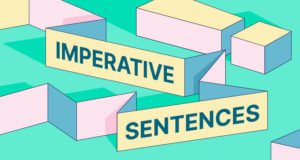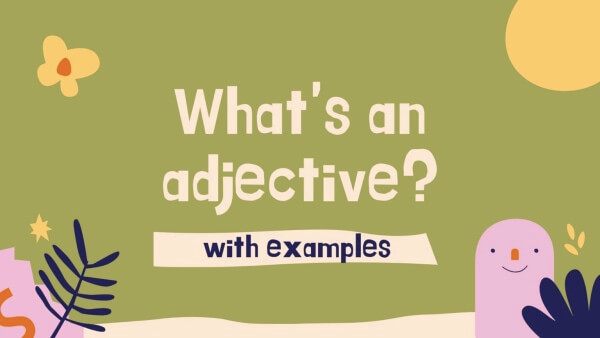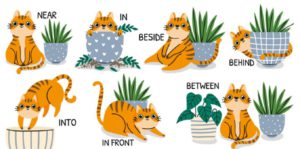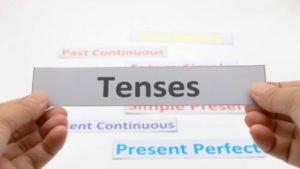The English language has eight parts of speech: noun, verb, pronoun, adjective, adverb interjection, preposition and conjunction. Today we will look at one of them: conjunctions, with some examples.
What is a conjunction?
A conjunction is a part of speech that connects words, phrases, or clauses within a sentence. It serves to establish a relationship between the connected elements, indicating how they relate to each other in terms of time, place, manner, or logical sequence. Conjunctions are important for creating coherent and well-structured sentences.
There are three main types of conjunctions:
Coordinating Conjunctions: These conjunctions connect elements of equal grammatical importance. The most common coordinating conjunctions are “and,” “but,” “or,” “nor,” “for,” “so,” and “yet.”
Example: I like coffee, but my friend prefers tea.
Subordinating Conjunctions: These conjunctions introduce subordinate (dependent) clauses and establish a relationship between the dependent clause and the main (independent) clause. Examples include “although,” “because,” “if,” “when,” “while,” and “since.”
Example: Although it was raining, they decided to go for a walk.
Correlative Conjunctions: These conjunctions are used in pairs to connect elements that are equal in grammatical structure. Common correlative conjunctions include “either…or,” “neither…nor,” “both…and,” “not only…but also,” and “whether…or.”
Example: She is not only intelligent but also hardworking.
Conjunctions play a crucial role in building complex sentences, providing logical connections between different parts of a sentence or between sentences. They contribute to the overall flow and coherence of written and spoken language.
What are the different types of conjunctions?
1. Coordinating conjunctions
Coordinating conjunctions link words or phrases in a sentence that has the same grammatical function. In English, there are seven major coordinating conjunctions that make the acronym FANBOYS, which is for, and, nor, but, or, yet and so, respectively.

For example,
- The building is several years old but is still popular to this day.
- In this course, the students can choose to write an exam or complete additional assignments.
- Candy refuses to eat broccoli, nor will she touch peas.
- The patient complained of pain, yet he refused the treatment.
- I have only been an employee for a week, so I don’t know where the record room is.
- You can eat your food with a fork or a spoon.
Transitional words like therefore and however also function as conjunctions. For example,
- The committee agreed to pass the proposal, however, some evidence presented at the last minute made them change their mind.
- She is a die-hard fan of the actor, therefore, the theme of her birthday party was his movies.
- Many employees complained about the new policy, and therefore the manager held a staff meeting to address their concerns.
2. Subordinating conjunctions
A subordinating conjunction connects a subordinate clause, also known as a dependent clause, to an independent clause. A subordinate clause, unlike an independent clause, cannot stand alone as a full sentence. On the other hand, subordinating conjunction can be used to connect a subordinate sentence to an independent phrase. Furthermore, subordinating conjunctions can appear at the beginning or the middle of a sentence. For example,
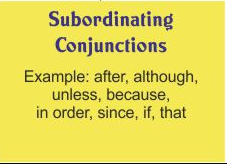
- Whenever it rains, we stay indoors and play video games.
- We stay indoors and play video games whenever it rains.
- The professor administered the exam after giving instructions.
- After giving instructions, the professor administered the test.
- The author must avoid plagiarism if she wants to win the award.
- If she wants to win the award, the author must avoid plagiarism.
- She will submit the assessment at midnight whether or not she completes it.
- Whether or not she completes the assessment, she will submit it at midnight.
Other subordinating conjunction examples in a sentence include:
- As Nina blew out the candle atop her table, her hair caught on fire.
- Yohan begins to sneeze whenever he leaves home to get a breath of fresh air.
- When the mailman arrived, my dog Terrance barked loudly.
3. Correlative conjunctions
Correlative conjunctions are conjunction pairs that function in tandem. They include either… or, both… and, rather… than, as well as neither… nor. Each pair of correlative conjunctions has a distinct purpose. For example,
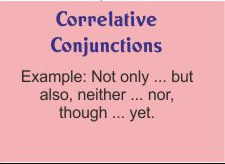
- The client needs flowers that are either blue or purple.
- He would much rather play indoors than go to the park.
- The donkey was as small as a dog!
- She is both beautiful and intelligent.
- I will either go for a run or stay home and play video games.
- Tyson is neither smart nor charming.
- Would you rather spend the day at the beach or go to the movies?
Can “that” be used as a conjunction?
In the English language, the word “that” serves several purposes. One essential application of “that” is to embed a certain type of dependent clause known as a noun clause inside an independent phrase. Such “that” clauses are frequently used to introduce a summary, quote or paraphrase, as the direct object of a reporting verb.
For example,
- Kim noted that more research was required.
Here,
Kim is the subject
noted is the verb
that more research was required is the dependent clause or the direct object of the verb “noted”.
- The authors predicted that the experiment would work.
Here,
The authors in the subject
predicted is the verb
that the experiment would work is the direct clause.
What exactly is a conjunctive adverb?
Conjunctive adverbs are elements of speech that link one clause to the next. They may also be used to demonstrate contrast, cause and effect, sequence, or other types of interactions.
Similar to other adverbs, conjunctive adverbs can be shifted around in the phrase or clause in which they appear. Furthermore, when separating two sentences, always use a period or semicolon before the conjunctive adverb. Conjunctive adverbs are insufficient to link separate sentences in the absence of accompanying punctuation. Here are the rules for adding punctuation.
- If conjunctions such as and, or, but and so come between the conjunctive adverb and the first phrase, use a comma.
- When conjunctive adverbs come at the beginning of a sentence’s second clause, use a comma between them. The sole exception is if the adverb is a single syllable, in which case no comma is required.
- Most of the time, if a conjunctive adverb comes in the midst of a clause, it should have a comma on both sides. This is not an absolute rule, and it usually does not apply to short clauses.
Some examples of conjunctive adverbs in a sentence:
- Jeremy kept misbehaving in karate class; therefore, he was scolded.
- She went into the grocery store; however, she didn’t find what she wanted to buy.
- I like the movie a lot; in fact, I have watched it over 10 times.
- Your kid came into my garage; in addition, he left behind muddy footprints.
- She was my friend; nonetheless, I felt like she was taking advantage of me.
- My cousin is very charming; on the other hand, his mother is quite annoying.
A list of some conjunctive adverbs
| Also | Additionally | Accordingly | Similarly |
| Anyway | Further | Besides | Consequently |
| Again | Conversely | Eventually | Elsewhere |
| Certainly | Comparatively | Contrarily | In comparison |
| Furthermore | As a result | Finally | Henceforth |
| In contrast | Next | Indeed | Notably |
| Hence | However | In fact | Equally |
| In addition | Incidentally | Instead | Just as |
| Moreover | Likewise | Now | Nevertheless |
| Namely | Nonetheless | Meanwhile | Otherwise |
Share with your friends


